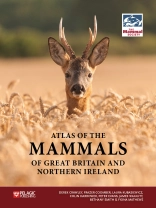Based on more than 1.8 million records, this Atlas provides the most up-to-date information on the current distributions of both terrestrial and marine mammals in the United Kingdom, the Channel Islands and the Isle of Man. Many changes over time, such as the rapid invasion of the grey squirrel, the recovery of the pine marten and the decline of the water vole, are readily apparent from the detailed maps.
Fully illustrated with photographs, detailed information is provided for 84 species, including descriptions of their ecology and identification, together with graphs showing the seasonal distribution of records. Data are also presented for feral species, vagrants, and cetaceans that have only ever been found as strandings. The Atlas will be an invaluable source of information to mammal enthusiasts, professional ecologists, and policy makers.
Mục lục
Foreword
Acknowledgements
Introduction
Methods
-Data collection
-Distribution maps
-Record coverage across the UK
Species accounts
Cetaceans known in Britain and Ireland only from strandings
Vagrant species and those without established populations in the UK
Feral colonies and populations
Giới thiệu về tác giả
The Mammal Society’s mission is to achieve the effective conservation of the mammals of the UK. The restoration of thriving mammal communities not only contributes to more sustainable ecosystems but engages people with the natural environment. Established in 1954, we provide a national voice for mammal conservation and advise policy makers, practitioners and wildlife enthusiasts – many of whom have been responsible for collecting the information presented in this Atlas.
Unlike many charitable organisations monitoring British wildlife, the Mammal Society receives no central government funding for our core work. Our activities to halt the decline of threatened species, monitor their conservation status, raise awareness of mammal conservation issues and advise on issues affecting British mammals, depend entirely on the generosity of our supporters.












